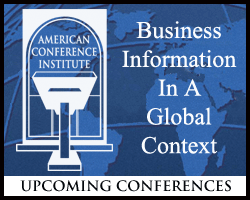Search Results for: "sas institute"
Locking in the Rules at the PTO
Federal Circuit: No Appeal of IPR Institution Denial, even If Denied for Extra-Statutory Reasons
Federal Circuit affirms Obviousness based upon General Knowledge of PHOSITA
Campbell’s Imaginary-Tiny-Cans Fail to Invalidate
Saint Regis Mohawk Tribe, Allergan v. Mylan: No Tribal Immunity for IPR
Introducing IPRs as the De Facto Administrative Claim Construction (ACC) Procedure
PTO Brief – Looking for Supreme Support for its AIA Trial Regime
Due Process and Separating Powers Within an Agency
Guest Post: Why Administrative Law Matters to Patent Attorneys—In re Cuozzo Speed Technologies LLC
Intellectual Property Legal Administrator – Research Institute – Brookline, MA
 Dana-Farber Cancer Institute is seeking an Intellectual Property Legal Administrator for its Office of General Counsel.
Dana-Farber Cancer Institute is seeking an Intellectual Property Legal Administrator for its Office of General Counsel.
Primary responsibilities include:
- Serve as primary contact for intellectual property-related inquiries and requests from faculty and staff members, law firms, licensing entities, and collaborating institutions.
- Review and process all intellectual property-related correspondence including all electronic mail sent to the Intellectual Property Docketing Inbox.
- Enter new Institute intellectual property assets, deadlines, and documents into and audit existing data in the electronic database/filing system.
- Prepare docket reports tracking intellectual property disclosures, assets, and deadlines.
- Submit renewal service payments to patent offices via an online service provider interface.
- Research and respond to requests for protection filing documents and statuses using internal systems and online patent office portals, including USPTO Public/Private PAIR.
- Assist with the supervision of law firms in the acquisition and maintenance of Institute intellectual property assets.
- Develop and document policies and procedures for new and existing functions, systems, and personnel.
- Work closely with technology transfer professionals in the Belfer Office for Dana-Farber Innovations to support business development, sponsored research, licensing, and compliance efforts.
- Prepare, coordinate execution of, and record intellectual property assignment, declaration, and power of attorney documents.
- Maintain electronic and/or hardcopy files of signed documents and trademark specimens.
- Coordinate Patent Committee meetings, keep minutes, and correspond with outside counsel regarding Patent Committee decisions.
- Perform duties related to other special projects as required.
apply online via the following link: https://careers-dfci.icims.com/jobs/15523/intellectual-property-legal-administrator%2c-office-of-general-counsel/job?mobile=false&width=1903&height=500&bga=true&needsRedirect=false&jan1offset=-300&jun1offset=-240
Additional Info
Employer Type: Non-Profit
Job Location: Brookline, MA
American Conference Institute: Upcoming Conferences
 American Conference Institute (ACI) monitors trends and developments in every major industry with a view to providing timely and leading-edge information to our delegates. Produced by some of the industry’s most seasoned professionals, ACI’s production team sets the benchmark for quality in content. Their conferences and courses cover current issues in business for both the public and private sectors. Please visit this media partner for more information on the following upcoming conferences.
American Conference Institute (ACI) monitors trends and developments in every major industry with a view to providing timely and leading-edge information to our delegates. Produced by some of the industry’s most seasoned professionals, ACI’s production team sets the benchmark for quality in content. Their conferences and courses cover current issues in business for both the public and private sectors. Please visit this media partner for more information on the following upcoming conferences.
American Conference Institute
 American Conference Institute (ACI) monitors trends and developments in every major industry with a view to providing timely and leading-edge information to our delegates. Produced by some of the industry’s most seasoned professionals, ACI’s production team sets the benchmark for quality in content. Their conferences and courses cover current issues in business for both the public and private sectors. Please visit this media partner for more information on the following upcoming conferences.
American Conference Institute (ACI) monitors trends and developments in every major industry with a view to providing timely and leading-edge information to our delegates. Produced by some of the industry’s most seasoned professionals, ACI’s production team sets the benchmark for quality in content. Their conferences and courses cover current issues in business for both the public and private sectors. Please visit this media partner for more information on the following upcoming conferences.
• Litigating Disability Insurance Claims, June 12, 2008, Boston, MA
• Biotech Patents, September 15-16, 2008, Boston, MA
• India LPO Summit, September 15-16, 2008, New York, NY
• FDA Boot Camp, September 17-18, 2008-Boston, MA
• USPTO Boot Camp: Patent Edition, September 22-23, 2008-Washington, D.C.
• Positioning Class Actions Early Success, October 2008, Phoenix, AZ
• Maximizing Pharmaceutical Patent Lifecycles, October 22-23, 2008, New York, NY
• Wage & Hour Litigation, October 28-29, 2008, San Francisco, CA
• Automotive Product Liability Litigation, October 29-30, 2008, Chicago, IL
• India LPO Summit, January 2009, New York, NY
• Consumer Finance Class Actions, January 27-28, 2009, New York, NY
• Complex Litigation, February 2009, (tentative location)
• FDA Boot Camp, March 30-31, 2009-New York, NY
• FDA Boot Camp, May 28-29, 2009-San Francisco, CA